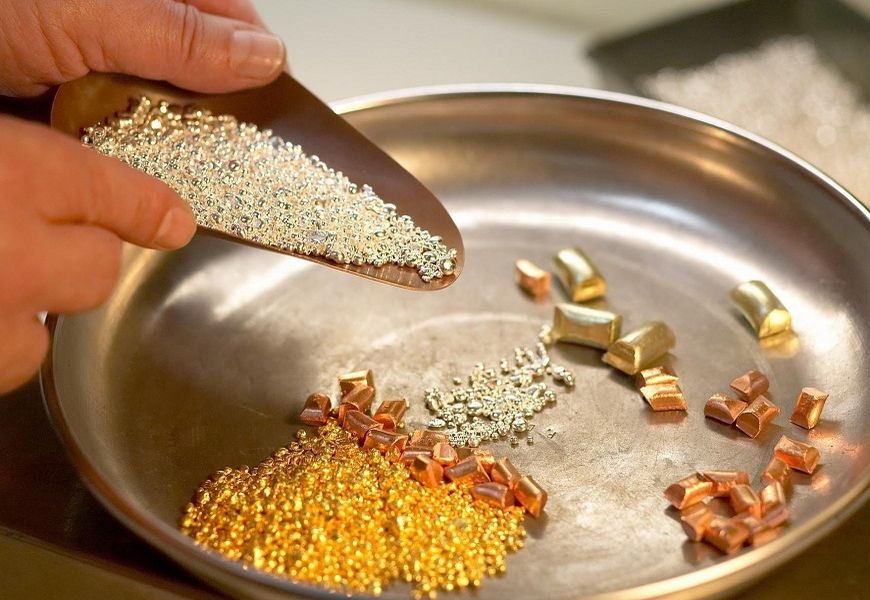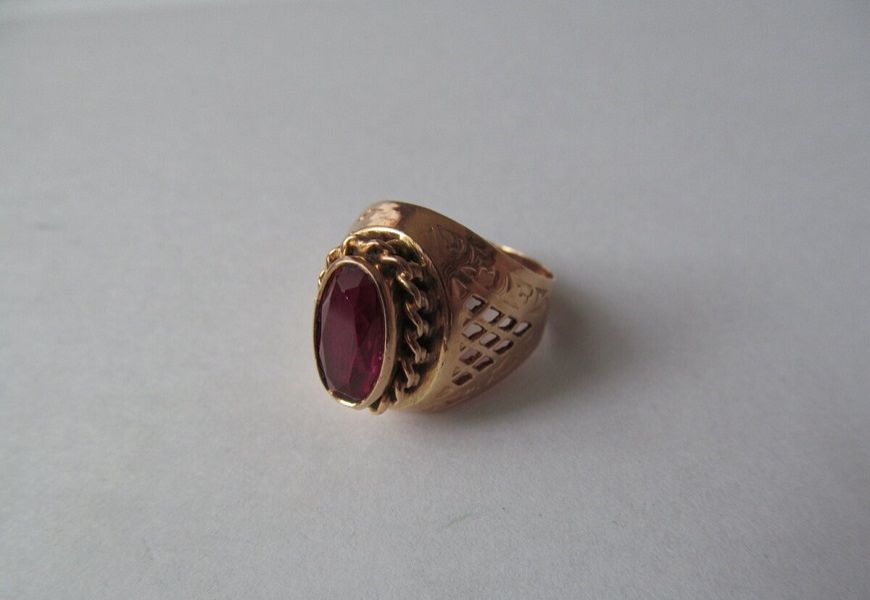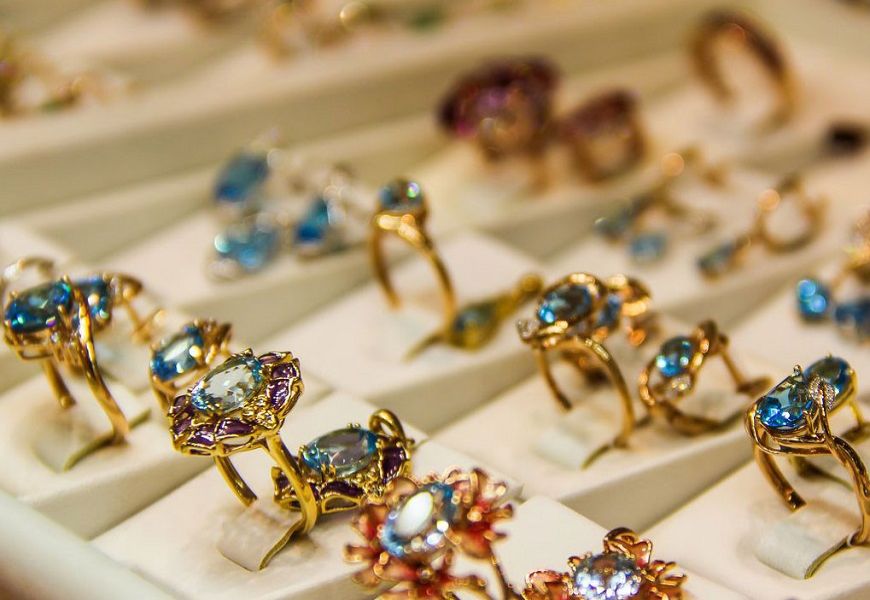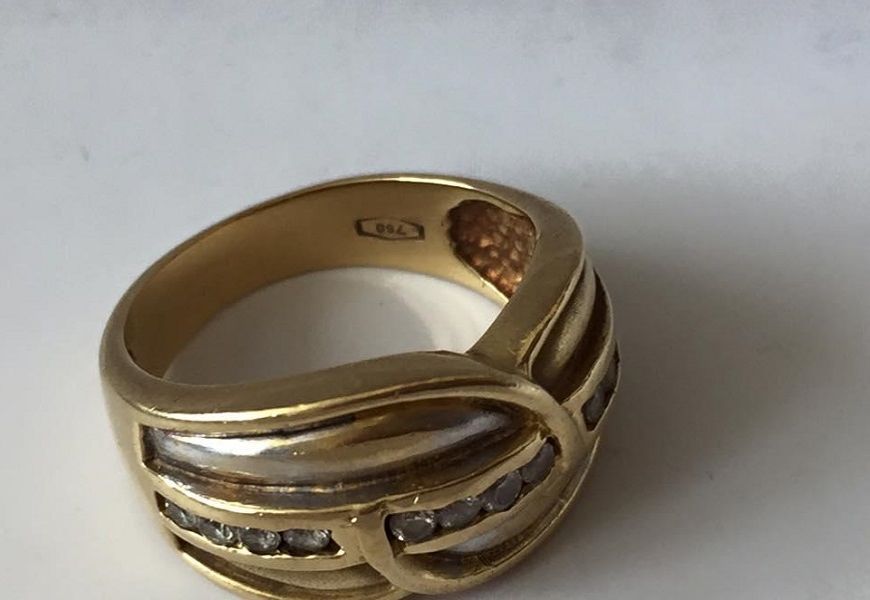585 hallmark was not always "number one" in Russia. Citizens of the former Soviet Union well remember the 583 marking that was used on almost every jewelry.
By adopting the global model and giving up 583 hallmarks, the country opened new trade routes. Is it true that the lauded Soviet quality has been left behind and that today's jewelry loses out in properties? Which gold is better, 585 or 583? Let's find out.
Sample 583 as an echo from the USSR, the history of its appearance, its features and composition
From the very beginning of its existence, the USSR pursued a policy of its own. The country sought independence and isolation from the rest of the world, which was evident even in the creation of jewelry.

The whole world has used carat system to determine precious alloys. The USSR went its own way, introducing the metric system of measurement.
Throughout the world, pure gold was equal to 24 carats. The value of the alloy used to create jewelry was equal to the number 14 in the carat system. In the USSR, 14 divided by 24, and the result was multiplied by 1,000. The result was rounded up and the number was 583.
This is how the real brand of the Soviet era - 583 alloy - was formed. The percentage of pure material from the total weight of precious metals was 58, but sometimes there was a slight plus error. 33% came from copper, the remaining 8% came from silver.
583 alloy could be of different shades, most often red, but pink and yellow were encountered. Such gold was worth 6 Soviet rubles per gram. Jewelry works of the USSR have historical value, reflecting the mores and stylistic movements of the whole country.
Carats in 583 proof
Sample 583 equals 56 gold pieces or 14 carats. 14K gold is the most popular among jewelry professionals and laymen alike. The works made of such precious metal are of high quality, long-lasting, and affordable.

Turkish gold and the introduction of GOST for testing
In the 1980s and 1990s, imported 585 hallmarks began to appear on Soviet shelves. It was mass imported from Turkey. Citizens USSR immediately began to buy up the gimmick, the yellow Turkish gold was very different from the Soviet red.
Jewelry from Turkey was of disgusting quality, the composition contained gold foil. The jewelry was deformed, blackened, and broke.
What happened caused a wave of indignation on the part of Soviet citizens. The Turkish 585 marking disappeared from the stores and was replaced by 583 gold of the highest category.
They stopped producing this alloy only in 1995, when the country had to adopt new GOSTs.
Gold for export. Reasons for switching to 585 proof
The USSR collapsed, the Iron Curtain collapsed completely, and it became necessary for the country to enter the European market.
The world refused to accept "USSR brand" as equal. There was a hitch - when converted to the carat system of evaluation, the value of 583 samples was 13.9 Caratinstead of the proper 14. Soviet products were offered a lower price than similar products that met world standards.
There was a need to introduce a new standard, the country switched to the well-known 585 alloy.

Table: Sample ratio of different systems
In total, there are four systems of samples of precious metals - metric, spool, Carat, lot. Each has an individual meaning and refers to a particular measure of weight measurement. The lot system is known as an earlier system, preceding all the others, is rarely used.
To translate samples into different systems, it will be convenient to use the table:
| Sample system | |||||||
|---|---|---|---|---|---|---|---|
| Metric sampling system | 999 | 958 | 750 | 585 | 583 | 500 | 375 |
| Carat sampling system | 24 | 23 | 18 | 14 | 14 | 12 | 9 |
| Proportion of pure gold | 99,9% | 95,8% | 75% | 58,5% | 56,3% | 50% | 37,5% |
The main differences between samples 583 and 585
Many believe that in the transition to a worldwide model "brand tips" only changed the numbers in the name of the sample, but in fact there is a difference.
It is these differences that contribute to the fact that customers have a preference for one or another alloy.
Ratio of precious metal to impurities
The first difference is the gold content. The 583 grade has 0.2-0.4% less of this noble metal than the commonly accepted 585 grade. Even if the discrepancy is quite insignificant, but it exists. The remaining 33.5% are allocated to copper and 8% to silver.

Tint of gold
The 583 alloy is more characterized by its red hue. The precious metal was used to mint coins, so the resulting money was often called "chervonets".
Works marked 585 are more often yellow.
But deviations are the norm for both alloys, there are shades of 14 different colors.
Type of branding
Initially, mark 583 depicted, in addition to the numbers, a male profile and hammer. Later, the imprint was changed, and a star, sickle and hammer, firmly associated with the USSR, appeared.
The modern branding for 585 gold looks like the imprint of a woman looking to the left.

Alloy purity errors
Although both precious metals are equal to 14 carats, a slight individual inaccuracy in terms of pure gold is acceptable for each. For the 583 alloy, a margin of error of 3% either way is considered the norm. For the 585, the deviation from the purity standard can only be in the plus side, up to 5%.
Real percentage of gold in alloys
Here lies another difference. According to expert estimates, 59% of pure gold is contained in alloy 583.
The 585 is ahead by one percent, the proportion of pure precious metal is about 60%.
GOSTs and performance specifications
Alloys must comply with GOST, a set standard adopted by the governments of several countries. The first GOST on the percentage of precious metals in an article was adopted in the 1960s, based on conclusions from the Research Institute of Yuvelirprom of the USSR.
The 583-gold works were characterized by a rather strong resistance to wear and tear. This characteristic was achieved thanks to the high percentage of copper in the composition.
If handled carefully, Soviet jewelry did not break or bend.
Gold price and demand
As the years go by, precious works of the USSR era become antiques. Interest in them cannot be compared with former times, but it remains at a high level. Fans of the famous Soviet quality will prefer such jewelry to Russian.

If you look at the Moscow Stock Exchange, you can see that 583 gold reached its maximum value in 2021 - almost 2,900 rubles per gram. The 585 assay is traded at the following rates: 2400 rubles to buy and 2600 to sell.
Price per gram of 583 gold
Medium costThe price of such gold items sold in Russia ranges from 2,400 to 2,800 rubles per gram. Pawnshops buy metals two to three times cheaper. In practice, gold of 583 hallmarks is offered for sale at a higher price, because sellers are well aware of the value of rare items.
Where can I find 583 gold?
Works using such an alloy are a real rarity in the showcases of modern jewelry outlets. Try your luck with your search in private workshops, antique shops, pawnshops, and online auctions.
Sometimes such items are found at themed exhibitions devoted to the life of a Soviet man.

How much can you sell Soviet jewelry today
If you examine the various online marketplaces, it is clear that supply and demand for USSR jewelry is still at a high level. Statistics show that it is possible to sell 583 gold in two or three times more expensivethan similar works of 585.
Buying 583 gold as an antique
Buying antiques is a highly specialized area of investment. Buying 583 gold can be a long-term investment not tied to the financial system.
As practice shows, the popularity of products of the Soviet era is only increasing every year.
Soviet Gold - the Standard of Quality: Myth or Truth
Everyone knows that the USSR emphasized quality and longevity in production. Numerous reviews of products of those times confirm this rule. Jewelry created from the Soviet 583 alloy was indeed notable for its resistance to various kinds of damage, reliability, and wear resistance.
Many people still have earrings, rings, bracelets from those times at home. You can see that the years have not affected the appearance of the items. They will look as new if they are cleaned of natural plaque.
All Soviet products were produced in accordance with GOST and the strictest technological rules. Poor quality was considered unacceptable.

The Party never spared precious metals for production. This is especially noticeable if you compare the standard wedding rings of that era and those of today.
A ring made by the masters of the USSR will be much thicker and heavier.
It is worth agreeing that the characteristics of 583-slat products were in some ways superior to their modern counterparts. During the Soviet era, this alloy had a reputation as the most reliable, but it is still impossible to call it a quality standard.
Care of 583 and 585 gold
Gold alloys tend to darken due to impurities in their composition. Contact with human skin, different temperatures, and other negative external factors also contributes to a change in appearance.
The best way to care for any piece of jewelry is to periodically visit a jewelry shop. Specialists will be able to clean and polish your jewelry, giving it a radiant new luster.
Gold can be cared for at home in the following ways:
- You need to put the jewelry in a mug containing a soap solution and 4 drops of ammonia for 25-30 minutes. Then the item will need to be rinsed with running water and wiped dry.
- A similar method, but in a container will need to mix water with 2 tablespoons of salt. The decoration can be left for half a day.
- For the third method, you will need a ceramic dish, food foil and baking soda. Cover the bottom of the container with foil, dissolve 2 tablespoons of baking soda in a mug of water, pour the liquid into the container. Place the product in the resulting mixture, leave it for half a day, and then wipe it dry.
Important: Avoid contact of 583 and 585 gold with alkaline reagents. Be sure to remove your rings before cleaning or wear rubber gloves. Household chemicals often contain aggressive substances.
Video: which sample is better
Question and answer section
I want to buy and not to miss a gift, what gold is more expensive 585 or 583?
The 585 proof pieces sold in jewelry boutiques will be new and make a wonderful gift for anyone.
Works of 583 marking most likely have their own history "behind their shoulders". Such a gift would be an excellent choice for a lover of antiques. Keep in mind that the price of such a gift will depend on its overall appearance. Exclusive works in perfect condition can be quite expensive.
What is the difference between 585 and 583 gold in the care of jewelry?
Avoid contact with acidic reagents and household chemicals. Clean your gold regularly. When you need to polish your jewelry, call a professional jeweller or use gold polish.
Remember that gold is a very soft metal. Avoid doing sports, repairing, and cooking while wearing jewelry to avoid mechanical damage.
Jeweler's comment

The key difference between assays 583 and 585 is the final gold content. Other characteristics, including the likely value, are almost identical; the price is more influenced by the complexity and originality of the design of the piece.
It is possible to get a new piece of jewelry made of 583 proof only to order. The 585 hallmark is the most sought-after and affordable at the moment, and is the benchmark for appearance and durability.
Which is the better gold hallmark, 583 or 585? Since they are not inferior to each other in all characteristics, I suppose that the answer depends on everyone's personal preferences. The opinion that "brand tips" are more resistant to chemical acids and external physical factors is wrong.
